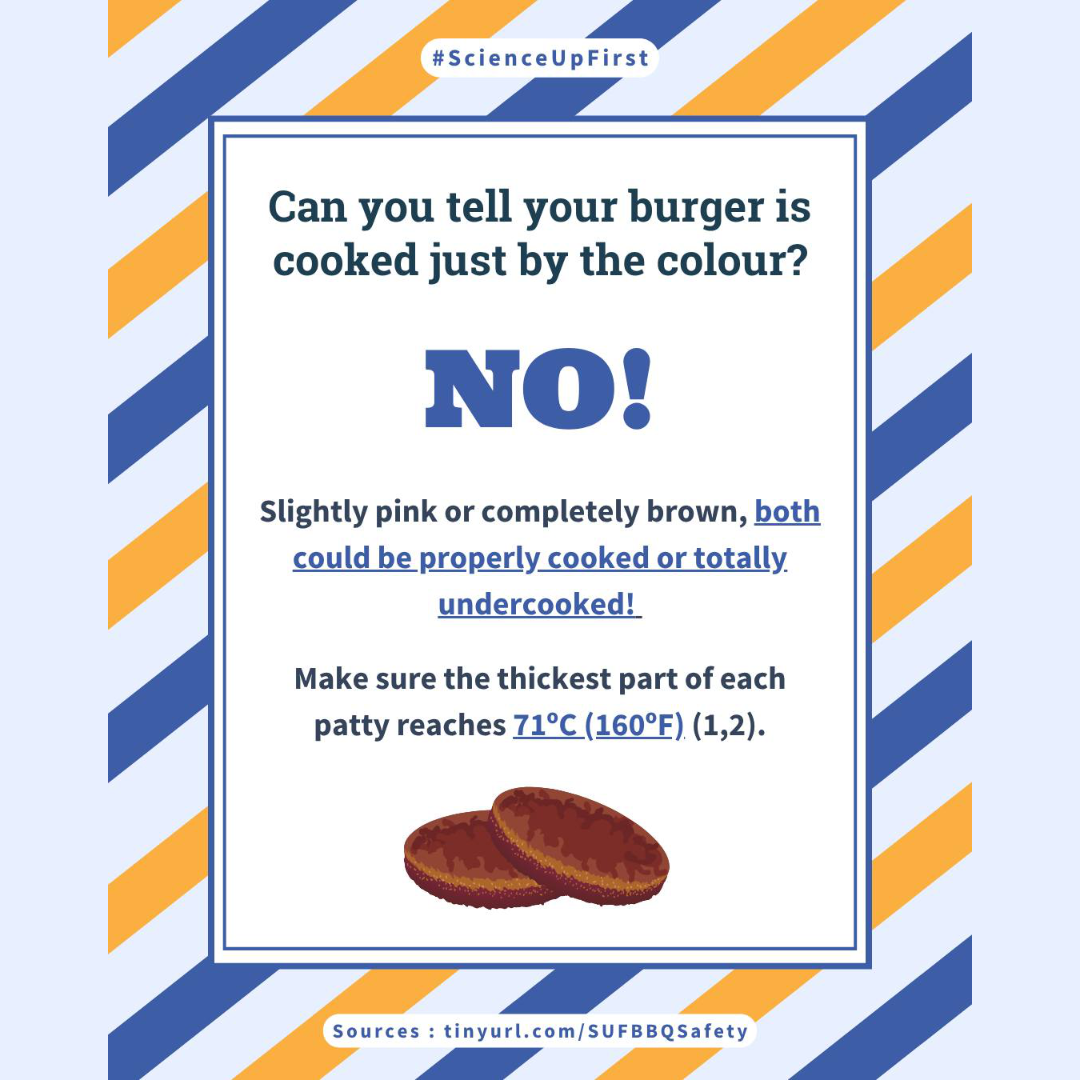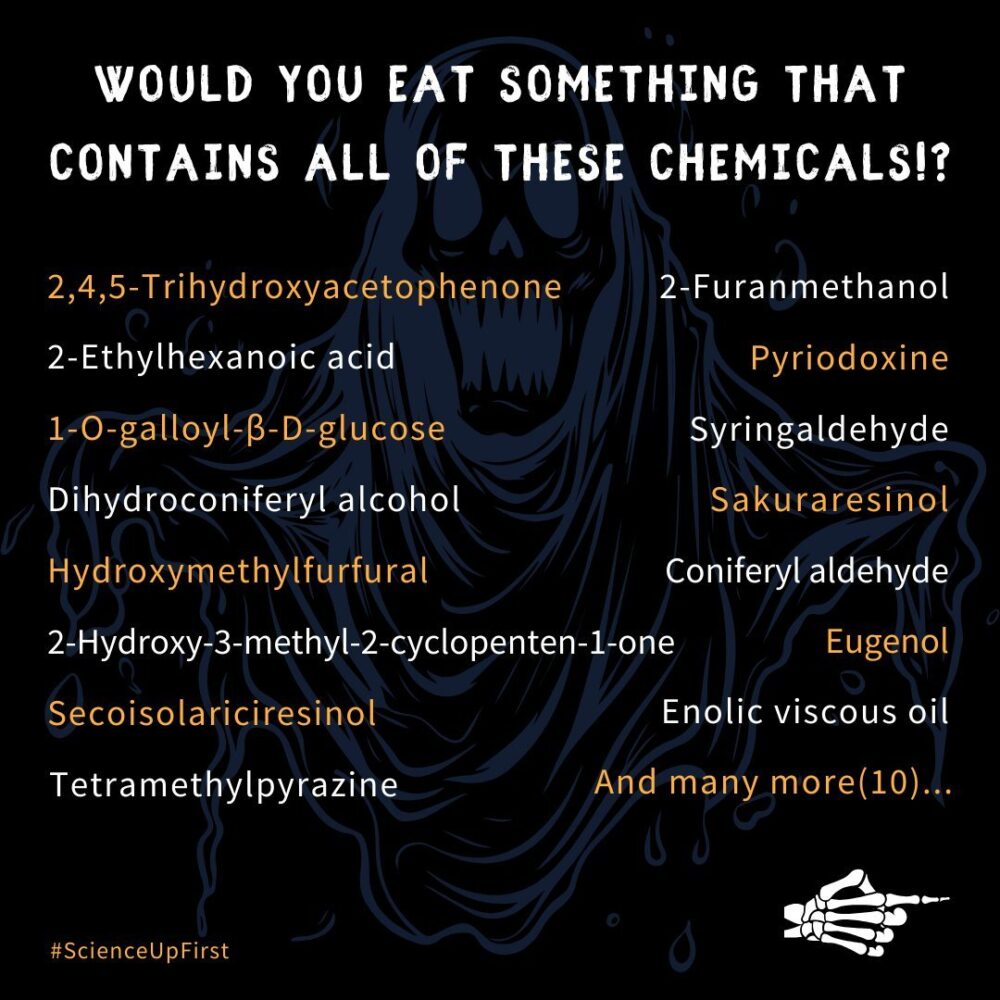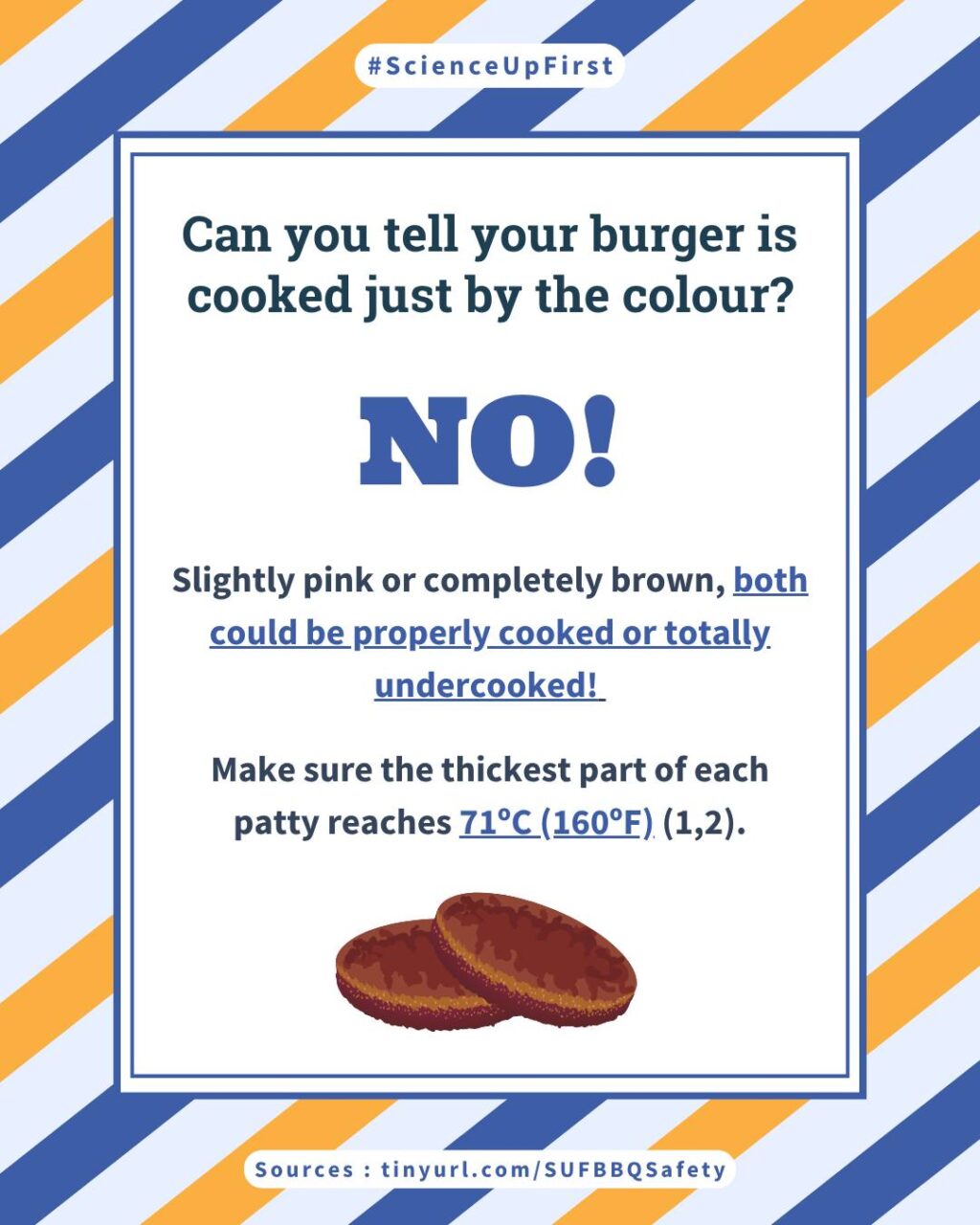
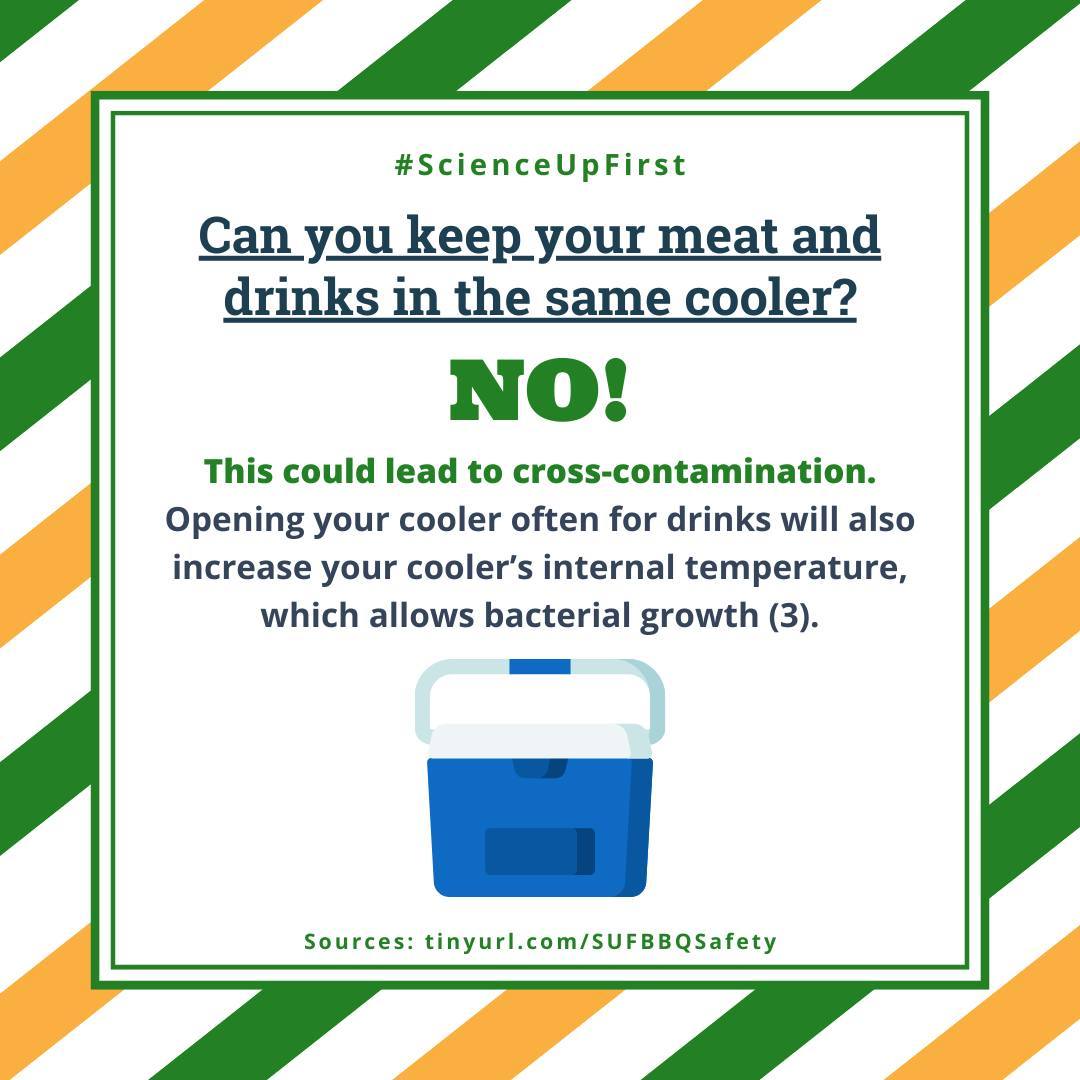
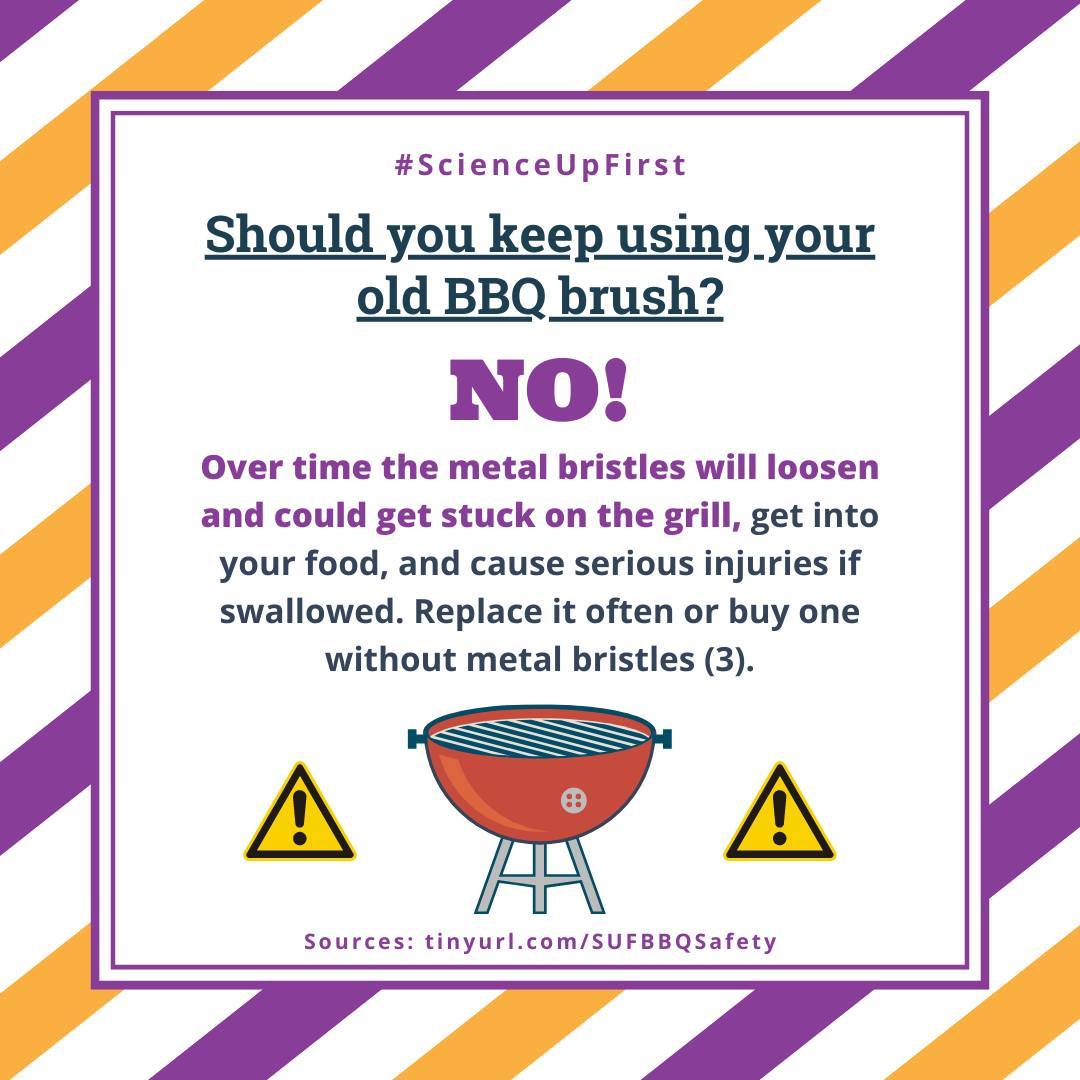
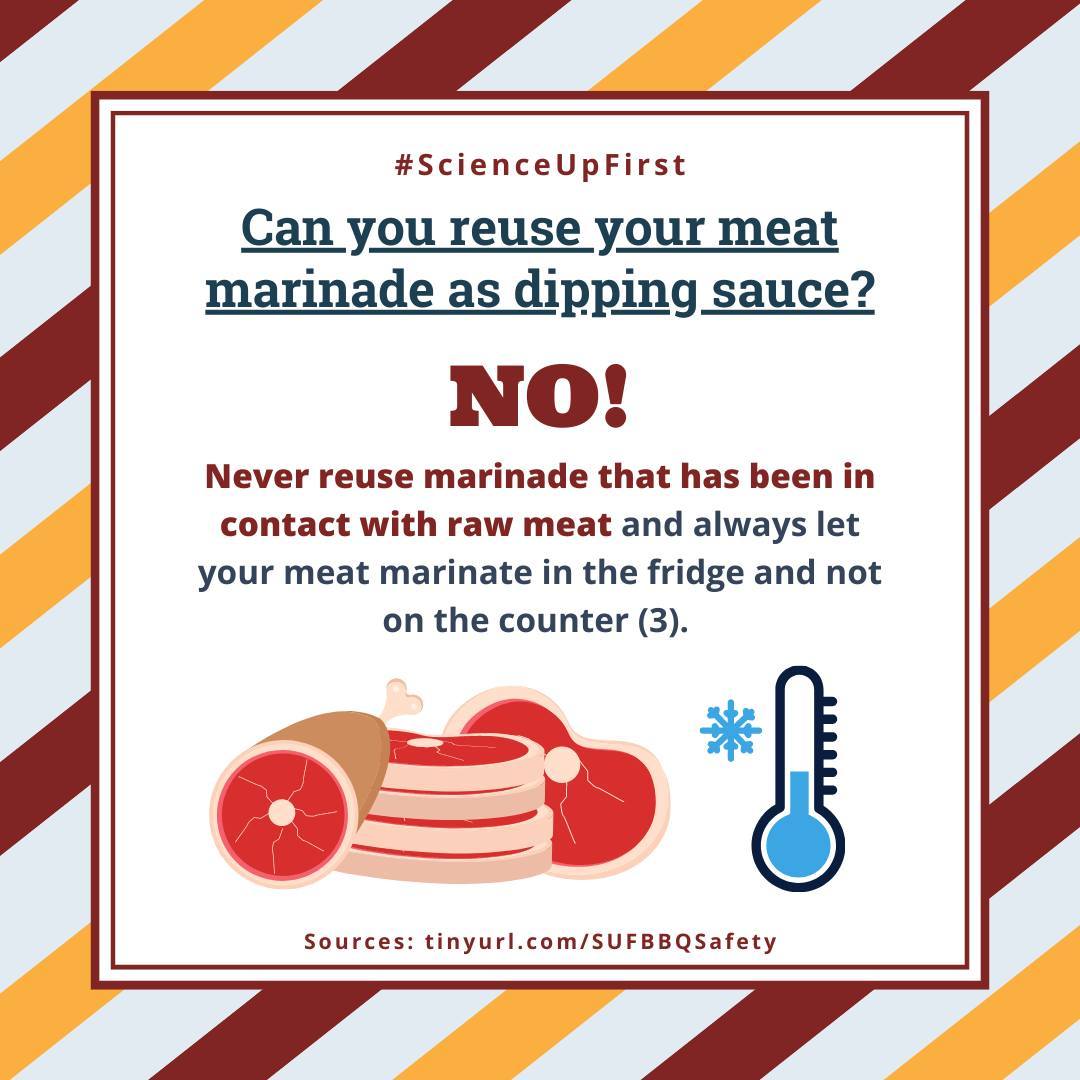
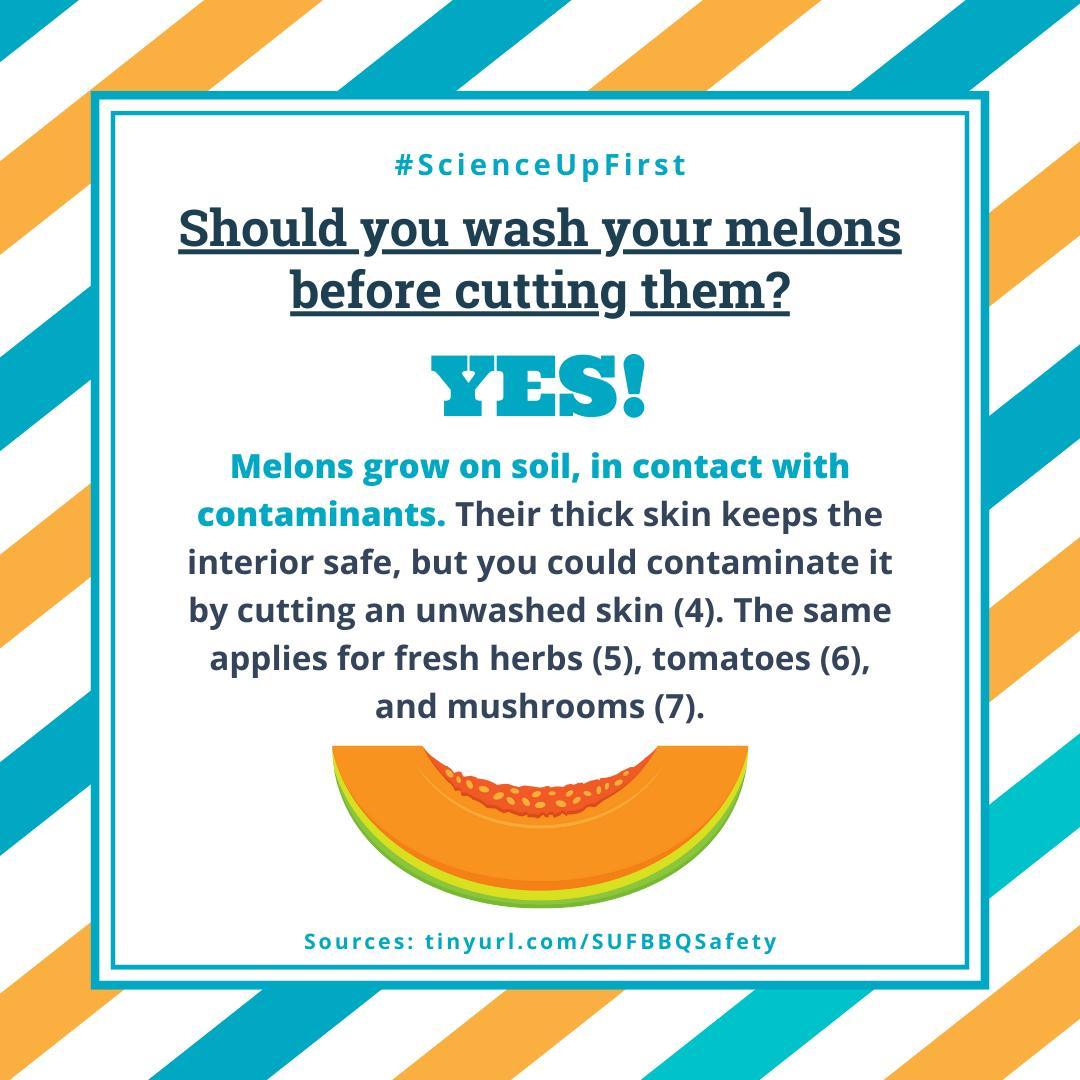
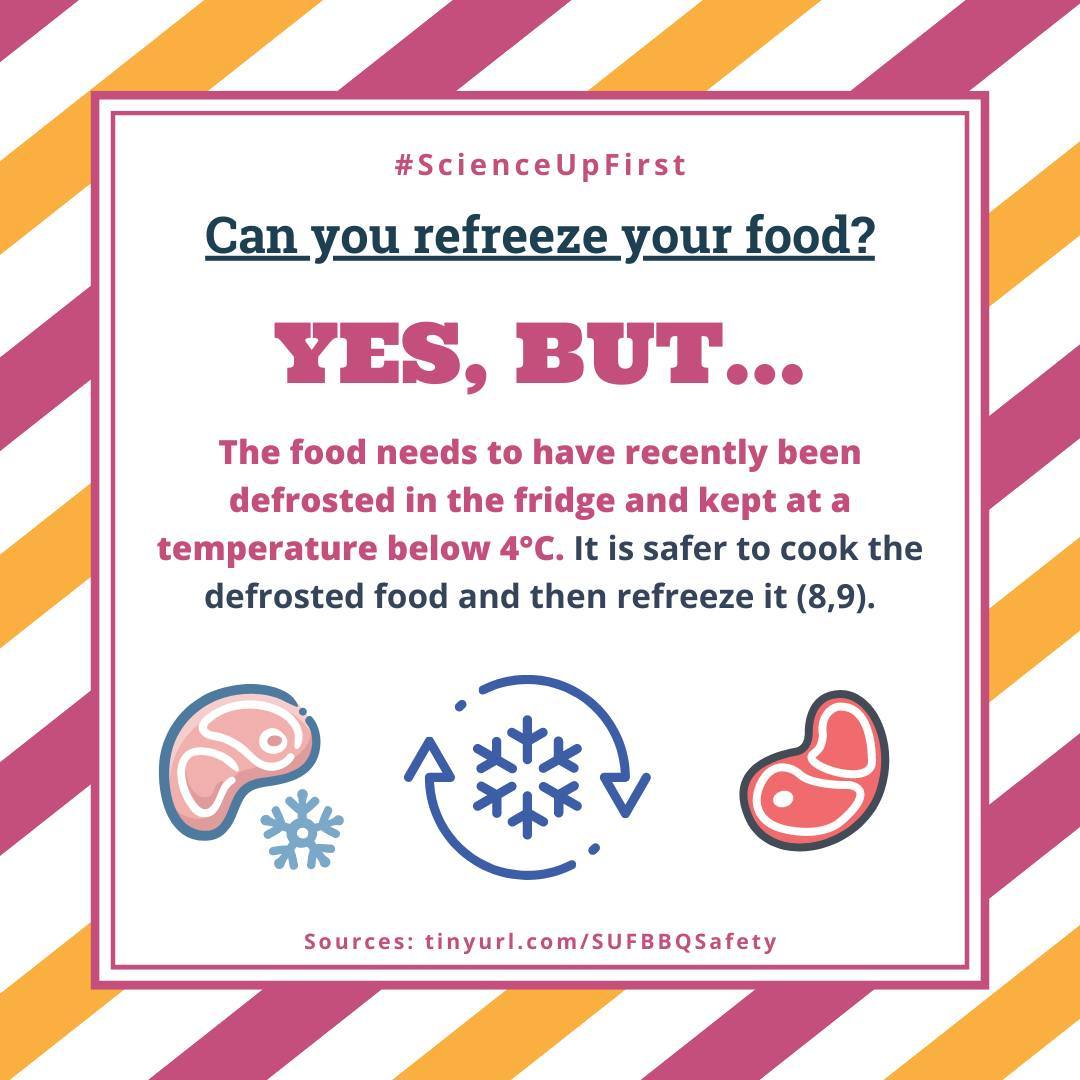
Summer means hot weather and breaking out the grill. 🍔
But wait! Your backyard BBQ could lead to foodborne illness. Here’s your reminder for a safe and delicious burger, and see our website for more food safety tips.
- Color of Cooked Ground Beef as It Relates to Doneness | Food Safety and Inspection Service
- Hamburger safety tips | Government of Canada
Colour does not always tell you if hamburgers are safe to eat. Use a digital thermometer and cook your ground beef until the thickest part of each patty reaches 71ºC (160ºF)!
- Food safety tips for barbecuing | Government of Canada
Never reuse marinade that has been in contact with raw meat. Make sure to marinate your meat in the fridge and not on the counter.
Having meat and drinks in the same cooler could lead to cross-contamination. But even if you make sure they are not in contact, there is a good chance you will open your cooler for drinks often which will make the temperature inside your cooler go down and promote bacterial growth.
Over time the metal bristles on your brush will loosen and could get stuck on the grill after cleaning. They could then get into your food and cause serious injuries if swallowed. Replace your brush often or buy one without metal bristles to be safe.
- Food safety tips for melons | Government of Canada
Melons grow on the soil and can easily be contaminated by manure, water and animals. Their thick skin prevents the interior from being affected, but if you don’t thoroughly wash them prior to cutting them, you could end up contaminating the interior as well.
- Food safety tips for fresh herbs | Government of Canada
- Food safety tips for tomatoes | Government of Canada
- Food safety tips for mushrooms | Government of Canada
Fresh herbs, tomatoes and mushrooms grow on the soil and can easily be contaminated by manure, water and animals. If you don’t thoroughly wash them prior to cutting them, you could end up contaminating them.
- Is It Safe to Refreeze Raw Meat and Poultry that Has Thawed? | University of Nebraska – Lincoln
- Is it safe to refreeze food that has thawed? | U.S. Department of Agriculture | Published July 17, 2019
You can safely refreeze food that was recently defrosted in the fridge and kept at a temperature below 4°C. To be safer, you can cook the defrosted food and then freeze it. Keep in mind that the quality of the re-frozen food decreases a little each time.
Share our original Bluesky Post!
View our original Instagram Post!

